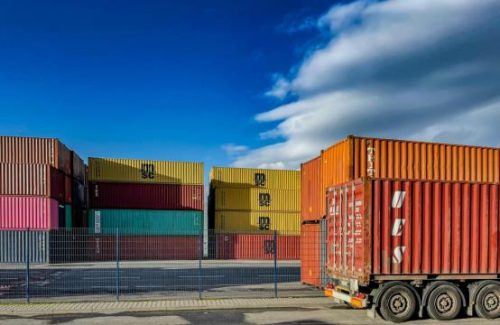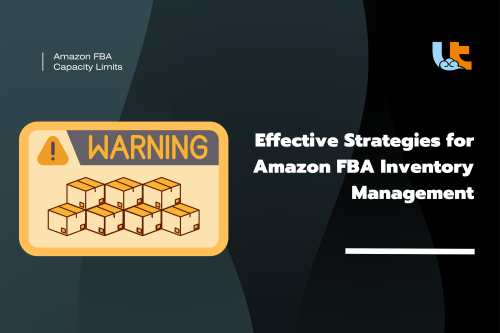
For importers shipping to Canada, unloading containers at the Port of Vancouver is only the first step.The real challenge is what comes next: a potential 4,000-kilometer journey by rail and truck to a warehouse in Toronto, or a complex cross-border shipment to a US-based FBA center.
This "final mile" in Canada is a massive, complex operation. This guide will cover the Canadian ground freight system, from port drayage to long-haul FTL, so you can navigate the geography and customs requirements without a hitch.
The Two-Step Journey of an Importer's Canadian Shipment
For an international importer, a Canadian shipment has two distinct trucking phases:
Drayage (Port Haulage): This is the first truck move. It’s a short-haul trip where a specialized truck picks up your container directly from the port or rail terminal (like a CN or CP rail yard) and moves it to a nearby warehouse or transloading facility. This is essential to avoid costly port storage and detention fees.
Transloading & Onward Trucking: At the warehouse, your goods are "transloaded" (moved) from the 20ft or 40ft ocean container into a standard 53-foot Canadian domestic trailer. This trailer then begins the second truck move—the "onward" or "line-haul" journey—to its final destination, like an Amazon FBA centre in Ontario or a retail hub in Calgary.
FTL vs. LTL: Choosing Your Onward Shipping Method
After your goods are transloaded, you must choose between Full Truckload (FTL) and Less-Than-Truckload (LTL) shipping. The standards are very similar to those in the US.
Full Truckload (FTL)
FTL shipping means you rent the entire 53ft trailer for your exclusive use. Your goods are the only items on the truck, which travels directly to your destination. This is the fastest and safest ground option.
- Best For:
- Large shipments (over 10-12 pallets or 5,000 lbs / 2,270 kg).
- High-value or fragile goods.
- Time-sensitive deliveries (like FBA appointments) across long distances (e.g., Vancouver to Toronto).
Less-Than-Truckload (LTL)
With LTL, you only pay for the space your pallets take up on the truck. Your shipment shares the trailer with goods from many other companies. The truck makes multiple stops at regional hubs, which makes this a more economical, but slower, option.
- Best For:
- Smaller shipments (typically 1-10 pallets).
- E-commerce sellers shipping smaller batches to multiple FBA centers.
- Budget-conscious shipments where speed is not the #1 priority.
| Feature | LTL (Less-Than-Truckload) | FTL (Full Truckload) |
| Best For | Small shipments (1-10 pallets) | Large shipments (10-24 pallets) |
| Cost | Cheaper for small-volume | More cost-effective for large-volume |
| Speed | Slower (multiple hub stops) | Faster (direct-to-destination) |
| Handling | Goods are handled multiple times | Goods are not touched until delivery |
| Risk | Higher risk of damage or loss | Very low risk of damage |
Decoding Canadian Freight Rates: The Hidden Costs
Your final freight invoice includes many variables. You must budget for these "accessorial fees."
Freight Class: Like the US, Canadian LTL shipments are categorized by a "freight class" code (from 50 to 500) based on their density and handling, which determines your base rate.
Destination (Beyond Points): Canada is a massive country. If your final destination is outside a major city (e.g., in a remote or rural area), you will face significant "beyond point" surcharges.
Fuel Surcharges (FSC): A variable fee all carriers add to cover fluctuating fuel prices.
Accessorial Fees (The Most Important Part):
- Tailgate Service: If your delivery location does not have a loading dock, you will need a truck with a "tailgate" (a liftgate) to lower the pallets. This always costs extra.
- Amazon FBA Appointment: Carriers must schedule a strict delivery appointment with Amazon. This coordination adds a fee.
- Border Crossing (PARS/PAPS): If your goods are transloaded in Canada but destined for a US-based FBA center, the truck must be customs-cleared. This involves PARS (Pre-Arrival Review System) and can add significant fees and complexity.
- Detention: If your team (or the warehouse staff) takes too long to load or unload the truck (usually > 1-2 hours), the carrier will charge a hefty "detention" fee.
How to Prepare Your Shipment for a Canadian Trucking Partner
Proper preparation is the best way to avoid extra fees and damage.
- Packaging (Palletization): This is the most critical step.
- Use Standard Pallets: Canada almost exclusively uses the North American Standard Pallet: 48" x 40".
- Do Not Overhang: Goods must not hang over the pallet's edge.
- Secure & Wrap: Use stretch wrap to secure all boxes to the pallet and label each pallet clearly. Poorly stacked pallets are the #1 cause of LTL damage.
- Labeling Requirements: For e-commerce sellers, this is vital. Every box and every pallet must have the correct Amazon FBA labels or other warehouse labels clearly visible.
- Key Documents: The Bill of Lading (BOL)
- The BOL is the contract between you (the shipper) and the trucking company for domestic freight. It contains all the details: what is being shipped, the freight class, the origin, and the destination.
- If your shipment is crossing into the US, a Customs Invoice and PARS documentation will also be required.
Shipping to the US or UK?
While the principles are similar, the trailer types (13.6m curtain-siders in the UK), pallet standards, and port processes are completely different. Read our dedicated guides:
Don't Let the Final Mile Complicate Your Supply Chain
Managing port drayage, navigating vast Canadian delivery routes, and handling cross-border customs can be a nightmare. A missed delivery appointment or an unexpected "beyond point" fee can halt your business.
This is why a true end-to-end logistics partner is so valuable.
At Linktrans, we manage the entire journey. Our platform integrates everything from warehousing and consolidation in China to the final-mile ground freight delivery across Canada. We provide a seamless, reliable process with one single point of contact, ensuring your goods arrive at their destination efficiently and on-budget.
Ready to simplify your entire Canadian supply chain? [Contact us for a free consultation today.]








